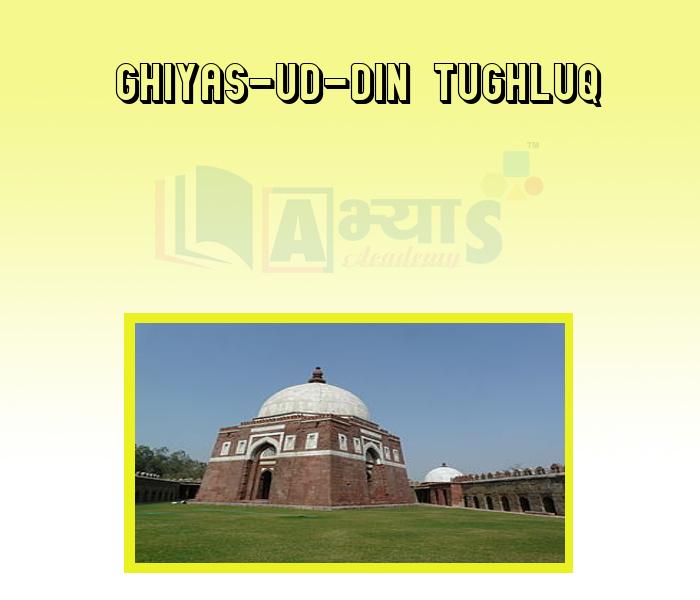Ghiyas-ud-din Tughluq










Ghiyas-ud-din Tughluq
Tughluq Dynasty (1320-1414 AD)
Ghiyasuddin Tughluq (1320-1325 AD)
His real name was Ghazi Malik. He died in February 1325. He was the founder and first ruler of the Turkic Muslim Tughluq dynasty in India, who reigned over Sultanate of Delhi (1920 -1325). In the aftermath of Ala-ud-din Khilji's death, there was utter chaos in the kingdom. The nobles of the state had put Khusro Khan on the throne. The latter began to bestow undue favours on mischievous people and to waste public money. Seeing this state of things, Ghazi Malik's son Fakhr Malik left Multan secretly and joined his father, informing him of what was happening at Delhi. Then, father and son, being both brave soldiers, collected the forces of Sindh and Multan and hastened to Delhi to help the Muslims against the Hindus. Arriving near Delhi with 3,000 veteran soldiers, they engaged in battle with the army of Khusro Khan, and defeated them. Then making their way into Delhi, they again defeated Khusro Khan in battle and he fled away. About midnight the ministers and the headmen of the place came to Ghazi Malak and his son in their camp and gave up the keys of the fort.
__________________________ founded the Tughluq Dynasty in 1320 AD, ending the Khilji Dynasty. | |||
| Right Option : C | |||
| View Explanation | |||
Ghazi Malik started the use of Batai in fixing rent, stopped the collection of debts, reduced the rate of land revenue to ________________________ and made canals for irrigation. | |||
| Right Option : B | |||
| View Explanation | |||
What was the time period of Ghiyasuddin Tughluq ? | |||
| Right Option : A | |||
| View Explanation | |||
Students / Parents Reviews [10]
I have spent a wonderful time in Abhyas academy. It has made my reasoning more apt, English more stronger and Maths an interesting subject for me. It has given me a habbit of self studying

Yatharthi Sharma
10thOne of the best institutes to develope a child interest in studies.Provides SST and English knowledge also unlike other institutes. Teachers are co operative and friendly online tests andPPT develope practical knowledge also.

Aman Kumar Shrivastava
10thA marvelous experience with Abhyas. I am glad to share that my ward has achieved more than enough at the Ambala ABHYAS centre. Years have passed on and more and more he has gained. May the centre flourish and develop day by day by the grace of God.

Archit Segal
7thBeing a parent, I saw my daughter improvement in her studies by seeing a good result in all day to day compititive exam TMO, NSO, IEO etc and as well as studies. I have got a fruitful result from my daughter.

Prisha Gupta
8thIt has a great methodology. Students here can get analysis to their test quickly.We can learn easily through PPTs and the testing methods are good. We know that where we have to practice

Barkha Arora
10thAbhyas is a complete education Institute. Here extreme care is taken by teacher with the help of regular exam. Extra classes also conducted by the institute, if the student is weak.

Om Umang
10thIt was a good experience with Abhyas Academy. I even faced problems in starting but slowly and steadily overcomed. Especially reasoning classes helped me a lot.

Cheshta
10thMy experience with Abhyas academy is very good. I did not think that my every subject coming here will be so strong. The main thing is that the online tests had made me learn here more things.

Hiya Gupta
8thAbout Abhyas metholodology the teachers are very nice and hardworking toward students.The Centre Head Mrs Anu Sethi is also a brilliant teacher.Abhyas has taught me how to overcome problems and has always taken my doubts and suppoeted me.

Shreya Shrivastava
8thAbhyas Methodology is very good. It is based on according to student and each child manages accordingly to its properly. Methodology has improved the abilities of students to shine them in future.
